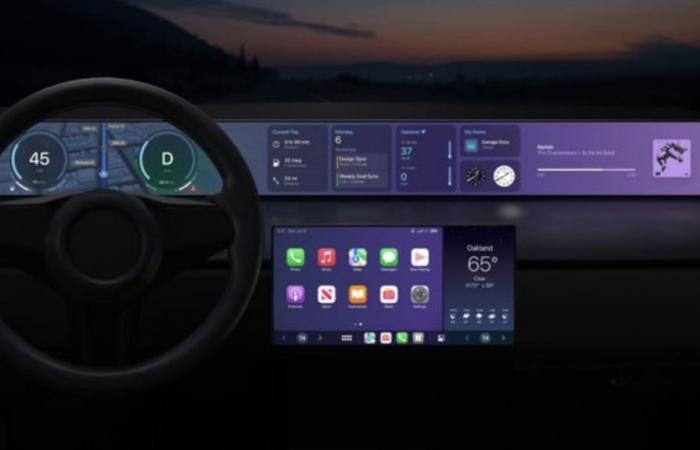On June 12, 2024, at WWDC24, Apple unveiled a revamped version of CarPlaymarking an important step forward towards broader and deeper customization of automotive interfaces.
The novelty lies in the possibility for car manufacturers and drivers to completely modify the instrument clusters and infotainment system screens, making every aspect finely customizable in a manner consistent with the evolutionary trends of the automotive industry.
As screens inside cars grow in size and electric cars (EVs) become more popular, times spent inside vehicles are set to increasealso by virtue of the charging periods.
In this context, Apple designed the new CarPlay interface aiming at offer extensive customization possibilitiesincluding screen layout, fonts and various content such as maps and audio.
Some major automakers have shown divergent approaches to Apple’s system. General Motors, for example, has chosen to not integrating CarPlay into its new electric vehiclespreferring an infotainment system based on Google technology.
Instead, Ford has decided to adopt the system, which will be presented in the first instance on some Porsche models. For manufacturers who choose to adopt CarPlay, Apple aims to make access to crucial information not only easier, but also highly customizable.
One of the main innovations is the instrument cluster customization. In addition to the possibility of change the weight and width of the fontsbuilders will be able to choose from a wide range of speedometer and fuel gauge styles, from minimalist designs to technical circular styles.
This flexibility is also extended to basic functions; for example, cruise control will visually illustrate the set and current speed, making it easy to quickly understand the vehicle’s status.
CarPlay will also support secondary indicators, allowing customization of driving modes for EVs, as well as specific graphics for boost and regenerative braking. There will also be dedicated indications for hybrid vehicles showing the electrical energy used compared to the driving power applied.
The creation of a layout always requires the presence of speed and fuel indicators, while secondary indicators such as temperature or regenerative braking are optionalthus offering the possibility of visualization systems with a clean or richly informative design.
Every configuration will leave room for what Apple calls “dynamic content”allowing great flexibility in the arrangement of the information displayed.
This extensive level of customization seems to score a new era for in-car screenswhich according to Apple, will be not only more useful but also more aesthetically appealing.
How and to what extent these advances will be effectively implemented by various car manufacturers and transferred to motorists, it will only become clear with timebut the prospects definitely appear promising.






